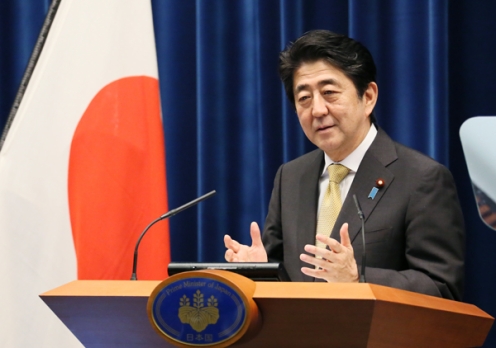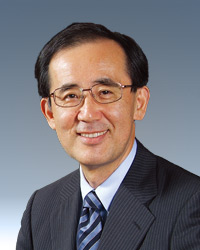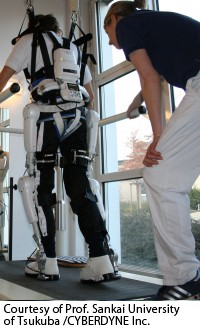The Approaches of Kyoto CompaniesThe secrets of competing in the international arena seen in the ancient capital
Why are Kyoto companies, including Kyocera, Nidec, and Murata Manufacturing, shining in their own unique ways in the global manufacturing industry?
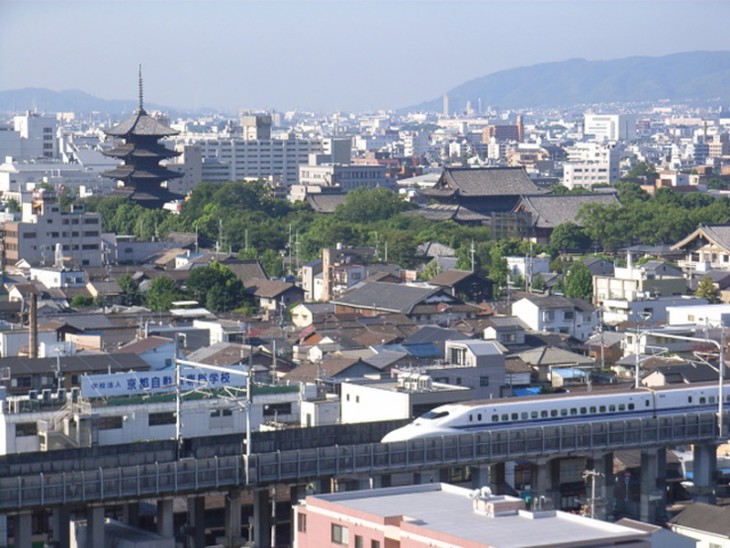
Kyoto is recognized as the Silicon Valley of Japan
“We would really like to go to Kyoto.” A delegation from a certain local government in Shanghai, China visited Japan in spring this year and communicated their wish to a private think tank. They did not want to go sightseeing in the ancient capital. “We regard Kyoto as the Silicon Valley of Japan. We would like to find the secret of its strengths,” said a member of the delegation.
A favorite tourist destination around the world, with 1,200 years of history, Kyoto also has another face. As IT companies in the United States concentrate in Silicon Valley, outstanding manufacturers, especially electronics companies, concentrate in Kyoto. The presence of Kyoto manufacturers in the global manufacturing industry has been increasing.
On September 25, the iPhone 6s was launched worldwide. Its leading feature is the 3D Touch function, which enables the LCD to detect the level of pressure of the user’s press and recreate the sense of touch, using faint vibrations. This function is supported by an ultraminiature motor. It is a high-performance motor that can be controlled minutely down to the single rotation level, and appears to be supplied solely by Nidec. Nidec is the world’s largest manufacturer of motors for hard disk drives (HDDs), the main components of personal computers. As the personal computer market is shrinking, Nidec considers high value-added motors such as those used for haptic technology, which is used for the 3D Touch, to be the next source of growth and profits.
The Volkswagen emissions scandal is shaking the auto industry. The emissions cheating was uncovered by a West Virginia University lab using an emission measurement system produced by Horiba. Horiba produced Japan’s first vehicle emissions measuring device in 1964, and now has a market share of 80% in this field worldwide. The U.S. Environment Protection Agency, which is investigating the Volkswagen scandal following the experiment carried out by the West Virginia University lab, is also using Horiba’s measuring device.
Kyoto companies other than these two companies, Murata Manufacturing, Kyocera, and SCREEN Holdings, have the world’s largest share in the laminated ceramic capacitor, ceramic package, and semiconductor wafer cleaning equipment markets, respectively. These companies have been making steady profits overseas.
Kyoto manufacturers’ strengths are not limited to their large market shares. Of the 29 Kyoto-based companies listed on the First Section of the Tokyo Stock Exchange, 27 exceed the average of the 862 manufacturers listed on the First Section of the Tokyo Stock Exchange in profitability or financial soundness, or both. Meanwhile, only five Kyoto companies — Kyocera, Murata Manufacturing, Nidec, Omron, and Nintendo — exceed the average sales (408.2 billion yen) of the Tokyo Stock Exchange.
Regardless of their size, these companies have a streamlined business structure. They are called Kyoto stocks on the stock market, and are preferred by investors. Many of them are high-priced stocks due to their profitability and soundness, and their market capitalization has been exceeding the overall level of companies listed on the First Section of the Tokyo Stock Exchange.
A mosaic of different industries creating innovations
Gross added value in industrial statistics clearly shows that the city of Kyoto has many blue-chip companies. Gross added value is the value of shipments minus the value of raw materials, etc. in the manufacturing industry, and shows the added value generated from production activities in different regions. Among inland cities without harbors, Kyoto is constantly ranked second in gross added value after Toyota, Aichi Prefecture.
The difference in the composition of gross added value between the two cities has attracted attention. In 2013, more than 80% of gross added value at Toyota was accounted for by transport equipment, which shows that Toyota is the “business castle town” of Toyota Motor Corporation. In Kyoto, in contrast, the beverage, tobacco, and feed industry accounted for 17%, and the electronic components, devices, and electronic circuits industry accounted for 16%. The top four industries, including those industries, accounted for only around 60%. In Kyoto, there is a mosaic of manufacturers in a variety of industries.
The late Jane Jacobs, an American journalist who was a foremost authority in urban economics, once said that an environment where there are small and medium-sized enterprises in many different industries in a city is an artificial incubator that will encourage innovation in technology and business. According to Jacobs’ theory, Kyoto is the ideal type of city.
Kamio Fumihiko, a senior researcher at Nomura Research Institute, said, “As more and more functions are concentrating in Tokyo, the key to regional revitalization is the cultivation of regional hubs that have functions connecting them to the world, and Kyoto is a model of a regional hub.”
“Kyoto companies have not succeeded because they are in Kyoto. Their success is the result of the efforts made by each company,” said Murata Manufacturing Executive Officer Miyamoto Ryuji. This is true in terms of a comment made by a business manager. However, when you look at individual companies’ track records, the unique approaches of Kyoto companies become visible, as numerous dots make a landscape.
Approach 1
Close relationships do not mean only friendship.
“I respect Tateishi Kazuma. I have received a lot of assistance from him over the course of around ten years since the foundation of the company,” said Nagamori Shigenobu, chairman and president of Nidec, sincerely at the shareholders’ meeting held in June.
In 1974, the year following the year of its foundation, Nidec received a 5 million yen investment from Kyoto Enterprise Development (KED), a pioneering venture capital corporation in Japan. This was KED’s second investment. The investment decision was encouraged by Tateishi, the founder of the Tateishi Electric Manufacturing Company (now Omron), who was then president of KED. Having received the investment from KED, which was jointly invested in by the Tateishi Electric Manufacturing Company, Wacoal, and the Bank of Kyoto, among other companies, Nidec earned the trust of the business community of Kyoto, and its concern over financing was mitigated. Since Nidec received the investment, Nagamori has visited Tateishi every time he has been troubled over management and has asked for advice. Nagamori received money, trust, and coaching for growth in the initial phase from the experienced business manager close to him.
From the perspective of business managers in Tokyo, deep relationships among executives are a conspicuous feature of the business circle of Kyoto. In the Gion district of Kyoto, there was a members-only club called Eleven. Tsukamoto Koichi, the founder of Wacoal, proposed launching the club, and it was run jointly by Tsukamoto and Kyocera Honorary Chairman Inamori Kazuo. Local business leaders often visited the club and drank together, sometimes with business leaders in Tokyo and Osaka.
Eleven was closed down after Tsukamoto’s death, but the Kyoto Keizai Club, which opened in 2004, has taken it over. There are some venues for interactions among business managers in Kyoto. “Kyoto has an environment where you are able to see Inamori and Nagamori soon if you say that you would like to talk to them,” says Horiba Chairman and President Horiba Atsushi in his book.
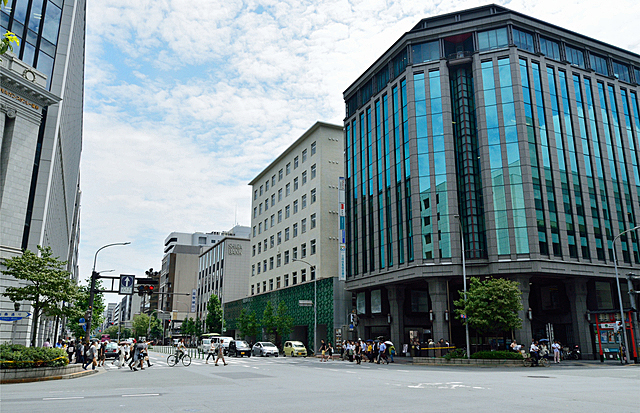
Venues for interactions among business managers like Kyoto Keizai Club have deepen relationships among executives in Kyoto.
There are also networks other than the one for executives. “There are also places for interactions among people involved in practical operations at different companies, such as secretaries and general managers,” said Professor Kawakita Hidetaka of the Graduate School of Management, Kyoto University. Looking at close relationships, many executives from Tokyo feel that Kyoto companies get along with each other. However, the networks in Kyoto are not only for promoting friendship.
“Kyoto companies are willing to share information when they run into obstacles in technology development, saying, ‘That company will tell you how to deal with the problem,’” said Chairman and CEO Nambu Kunio of NABEL, which manufactures fully automated egg grading and packing equipment (Minami Ward, annual sales of 3.2 billion yen in FY2014). NABEL began to manufacture the equipment in Japan in the 1970s. The company holds around 120 patents, which is unusual for a company of its size. The company says that its development capabilities are supported by knowledge shared among companies.
In the networks, negative information and risk information is exchanged, such as information on results, financing, and personnel affairs. “You can obtain a large quantity of high-quality information only if you are regarded as a reliable insider,” said President Nambu.
Approach 2
You can earn money by choosing a method that others do not choose.
There is a reason that Kyoto companies do not hesitate to share trade secrets: There are few rivals to compete against in the same market. Companies noticeably tend to avoid fields where other companies are involved as much as possible, and focus on entering niche markets where they can manufacture unique products.
There are unlisted companies that are “niche kings” in a wide range of fields, such as the companies described on page 83. Ishida (Sakyo Ward, annual sales of 98.1 billion yen in FY2014) has a share of 70% in the market of measuring tools used in the food production line. Kataoka Corporation (Minami Ward, annual sales of 4.3 billion yen in FY2013) has a share of 50% in the market of laser welding equipment for lithium-ion batteries. “In the manufacturing industry, the company holding the largest share and other companies are completely different in terms of profitability. The strengths of Kyoto companies lie in their pursuit of craftsmanship in niche markets,” said Managing Director Murata Tomohiro at Frontier Management, who is the author of the book Why are only electronic components performing well? The high profitability of Kyoto companies is the result of their aspirations to enter niche markets.
Expanding operations is a very attractive idea for management. However, the management at Kyoto companies is making the sensible choice of focusing on fields where they are strong instead of solely striving to expand their scale. Why?
When Murata Akira, the founder of Murata Manufacturing, was young, he said to his father, who ran a ceramic ware shop, “The future of a small business is limited. Why don’t we increase our customer numbers?” His father reprimanded him, saying, “If you try to obtain a lot of orders, you will have to go to the customers of your competitors and offer products at low prices. Your competitors will be annoyed, and you will not make a profit.” His father suggested that he could enter a new field where he would not have any rivals. Under the policy that his father showed him, Murata decided to focus on special porcelain. That was the beginning of the current ceramic condenser. Avoiding competition is a lesson learned about living comfortably together in the city in a basin.
Toyoda Hirokazu, secretary general of the Kyoto Association of Corporate Executives, points out an item of cultural background. “Before the Meiji Restoration (1868), the core local industry was business for the imperial family. In that environment, the attitude of valuing high-quality products for upper-class customers was developed,” said Toyoda.
Approach 3
Is Tokyo superior?
Kyocera, the largest company in Kyoto, achieved growth in its early days through transactions with IBM of the United States. In the background was the cold shoulder that Kyocera received from major domestic companies as a venture company. When Inamori visited companies in Tokyo, they flatly refused, saying, “We cannot deal with small and medium-sized enterprises that can be blown away.”
Nidec experienced a similar kind of humiliation. When Nidec offered its products to a major electronics manufacturer in Tokyo in its early days, the electronics manufacturer asked only questions that were not related to Nidec’s business. Their questions included, “How many employees do you have?” and “How much capital do you have?”
Nagamori therefore visited 3M of the United States, which was then a major global manufacturer of tape recorders. Nagamori visited its head office without an appointment. The 3M staff member to whom Nagamori spoke listened to him intently and asked, “How will this product contribute to our business?” This walk-in sales visit resulted in orders worth 15,000 dollars (approximately 4.6 million yen at the time). Nidec was a start-up with capital of 20 million yen. The receipt of the orders was a major tipping point.
The image of Kyoto may be that it has many long-established businesses. Unlike this image, most of the Kyoto manufacturers that we are focusing on in this report were established after World War II. Although people in Kyoto tend to regard Tokyo as an inferior city, Kyoto companies were regarded as far inferior to major companies in Tokyo. However, Kyoto companies did not seek recognition from Tokyo and went overseas, probably because of their pride.
Approach 4
Depend only on yourself.
However earnings may expand, a company will fail without cash. To put it another way, if you have plenty of cash, you can continue to make investments for recovery despite poor performance. Nintendo is following this principle.
The late Iwata Satoru, the former president who passed away in summer this year, was an excellent president who launched the mega-hit products Nintendo DS and Wii. After Nintendo posted sales of 1.8 trillion yen in the fiscal year ended 31 March 2009, it lost casual game users to smartphones, and sales declined. At the shareholders’ meeting one year, investors asked the company to lay off employees as part of a restructure. Iwata rejected the request, saying, “Will software that staff will create in fear be able to move the hearts of users?” As his question indicated, there does not appear to have been any restructure.
Nintendo can continue to invest in human resources during a serious slump, when annual sales declined by two-thirds in three years after peaking, due to its extremely strong financial structure. Net cash stood at 915.2 billion yen and the equity ratio was 86.2% (as of 31 March 2015).
Many Kyoto manufacturers are cash-rich companies, and their equity ratio is high if they are not as cash-rich and do not have as high an equity ratio as Nintendo. One of the reasons is that as described above, profits have accumulated naturally due to their business model; that is, operating a profitable business in a niche market. Another reason is that they have intentionally strengthened their financial base. Nintendo’s management policy says that research and development expenses and capital expenditures necessary for growth are to be paid from internal reserves. Omron’s management policy, which was established immediately after the wa r, says that the company shall avoid debt.
In principle, Kyoto companies do not have any parent companies to depend on. In Tokyo and Osaka, there are conglomerates and other large companies, and companies affiliated with them can receive support from them in terms of financing and obtaining credit. Without this condition, Kyoto companies have needed to maintain their operations on their own.
The political background appears to have helped Kyoto companies to develop a self-reliant attitude. After Ninagawa Torazo took office as the governor of Kyoto Prefecture in 1950, a progressive government continued for twenty-eighty years. During this period, Kyoto companies were not able to expect to make demands of the government, and had to deal with radical labor unions. Tsukamoto Koichi of Wacoal placed a tiger rug in the entrance hall in association with the governor’s name — “tora” of Torazo means a tiger — and trampled it before going out every day. Such was the antipathy of business leaders towards the Ninagawa administration. They depended only on their own capabilities and money. The hard times appear to have strengthened Kyoto manufacturers’ management skills.
Approach 5
Cultivate excellent younger executives.
Toyoda Hirokazu, secretary general of the Kyoto Association of Corporate Executives, says that he has had a strong sense of crisis about the lack of new listed companies for a long time (page 87). There have been no new listed companies since Faith, an IT company founded in 1992, was listed in 2001. Hatena (Chuo Ward, annual sales not disclosed), an Internet services company, and other unlisted companies have been accepted in their respective industries. However, their impact on industrial circles appears small.
The entry rate in Kyoto was 1.78% (2012). The entry rates in Tokyo’s 23 wards, Osaka, and Fukuoka are higher than 2%. No wonder the business community of Kyoto has a sense of crisis about local entrepreneurship.
Immediately after the war and during the high economic growth period, many companies were established in Kyoto. Companies that had already been established and their management were involved in the establishment of new companies as if they were incubators or mentors. We should not overlook this fact. As described above, Nagamori Shigenobu of Nidec learned from Tateishi Kazuma, the founder of Omron. When Tateishi had limited experience as a businessperson, he laid the foundations of his company by making the company act as a subcontractor for Shimadzu Corporation. Shimadzu has given lessons about equipment manufacturing to Horiba. Shimadzu can be called a cradle for Kyoto manufacturers. Excellent businesses gave birth to new excellent businesses. Will Kyoto be able to hand down this cycle, which was established immediately after the war, to the next generation? Kyoto will probably need to take on the challenge of handing down the cycle, which will strengthen it.
Translated from “Kyoto kigyo no osaho — Sekai de tatakau gokui wa koto ni atta (The Approaches of Kyoto Companies — The secrets of competing in the international arena seen in the ancient capital),” Weekly Toyo Keizai, 10 October 2015, p.82-87. (Courtesy of Toyo Keizai Inc.) [October 2015]
